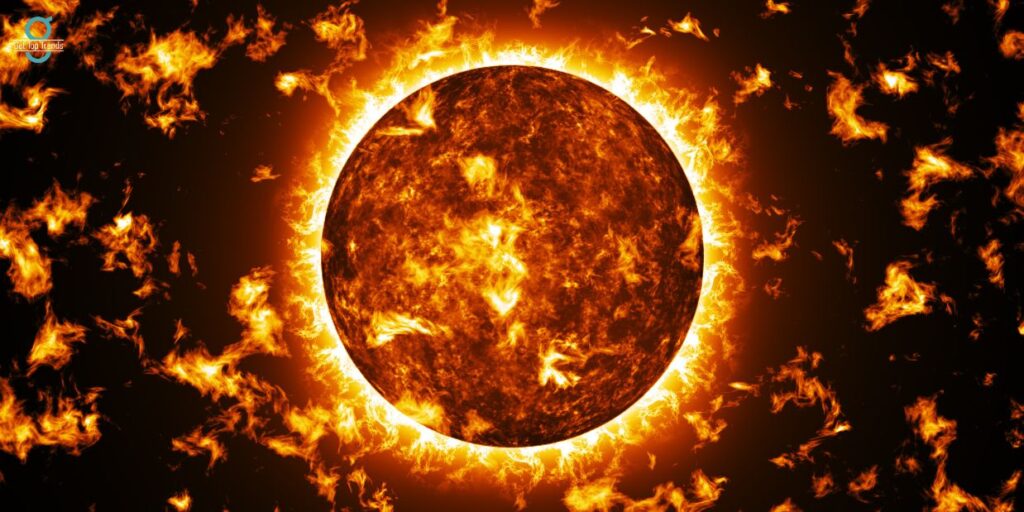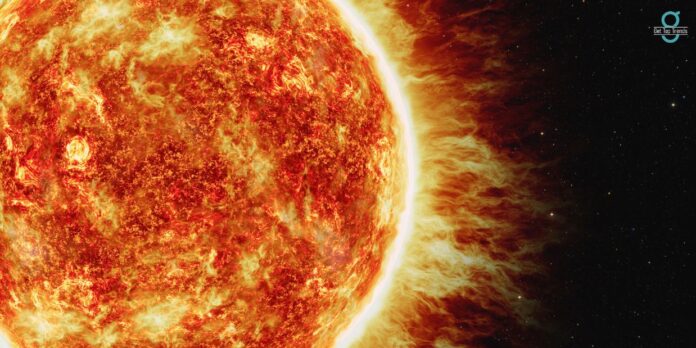According to Russian scientists, Earth could face the impact of massive solar flares from a series of turbulent disturbances on the scorching surface of the Sun, reaching temperatures of 10,000 degrees Fahrenheit.
The Fedorov Institute of Applied Geophysics in Moscow has issued a warning stating that Class X flares, including proton flares, are a distinct possibility. This development raises concerns about the disruption of satellite communications due to the anticipated deterioration of short-wave radio conditions.
Solar flares of the X-class category are the most potent bursts observed in the solar system, with the capacity to generate long-lasting radiation storms.
Specifically, proton flares are characterized by energetic solar particle storms predominantly composed of protons. The complex interplay of strong magnetic fields within and surrounding the Sun culminates in the occurrence of these solar flares.
As NASA explained, such flares’ consequences include potential harm to satellites, communication technology, and the Earth’s magnetic field.
This news serves as a reminder of the vulnerabilities associated with solar activity. Notably, Elon Musk’s SpaceX experienced the loss of 40 satellites in 2022 due to a geomagnetic storm prompted by a powerful solar flare.
Further highlighting the issue’s significance, the Fedorov Institute reported the observation of three solar flares on Sunday, one of which persisted for 14 minutes and caused disruptions to radio communication.

The impact of these solar flares is not limited to communication disruptions alone. The National Oceanic and Atmospheric Administration’s Space Weather Prediction Center recently reported a “strong radio blackout” in some areas of the United States.
NOAA attributed this event to a solar flare originating from a substantial and intricate region known as sunspot group 3354. As a result, a temporary degradation or complete loss of High Frequency (HF) radio signals occurred on sunlit portions of the Earth.
Russian scientists have been closely monitoring the growth and development of a giant sunspot, AR3354, which was initially observed on June 27. Within two days, its size rapidly expanded to approximately ten times that of Earth, eliciting concern among space weather experts.
NASA explains that sunspots appear dark on the Sun’s surface because they are comparatively cooler than other regions.
The magnetic field lines near these sunspots undergo explosive reorganization, resulting in solar flares that release substantial radiation into space. This radiation can interfere with radio communications on Earth.
In addition to solar flares, another apprehension lies in solar storm events, during which large amounts of coronal mass ejections (CME) are ejected from the Sun and traverse toward Earth’s magnetic field. These events can trigger geomagnetic storms, potentially disrupting or damaging satellites, communication networks, internet connectivity, and GPS systems, causing power grid failures.
The current situation underscores the significance of understanding and mitigating the potential impacts of solar flares and storm events. Timely and comprehensive monitoring, coupled with robust protective measures, are essential to safeguarding critical infrastructure and ensuring the uninterrupted functioning of our technologically-dependent society.
As mobiles are glued to everyone’s hand so, why not get benefits from them? Get updated with Top Trending News and explore things.


